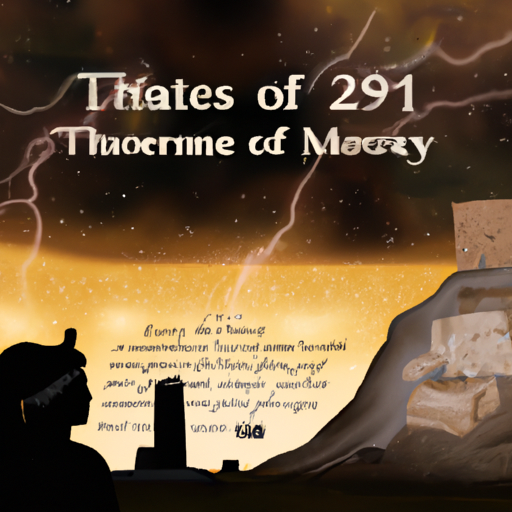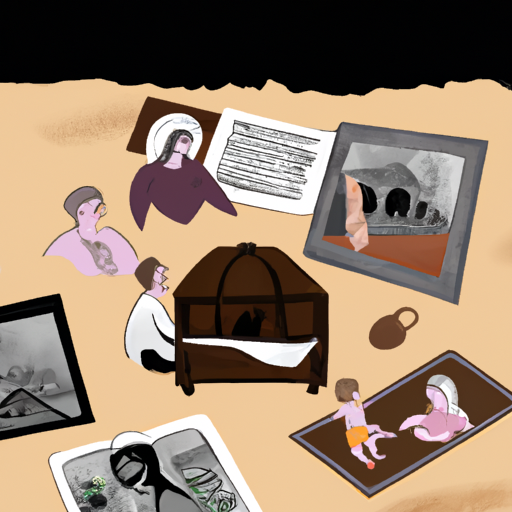A Look into the History of Victorian Clothing Materials
What was the mysterious material that clothed the Victorians? What fabrics were used to create their iconic style? Delve into the past and explore the secrets of Victorian fashion!

The Victorians left an indelible mark on fashion that continues to be revered today. But what was the secret fabric that clothed them? To answer this, one must delve into the annals of Victorian fashion. Whilst certain materials have come and gone, some have been constant throughout the era. Such fabrics include cottons, wools, silks and velvets. Cotton was widely used for everyday wear due to its affordability and comfort. Wool was employed for heavier garments such as coats and jackets to protect against chillier temperatures. Silks were often incorporated into formal attire like ball gowns and suits, while velvet added a touch of sophistication to eveningwear. By combining these fabrics with ornate embroidery and lace trims, the Victorians crafted their signature style which is still admired today.
.
Introduction

Awe-inspiring and ever-evolving, Victorian fashion has been a source of inspiration for generations. From the delicate fabrics to the intricate adornments, each piece is crafted with an eye to detail and a heart for tradition. Cotton, wool, linen, silk and velvet are just some of the materials used in the creation of these timeless designs. Natural dyes such as madder or indigo fill the garments with color and life. Lace, ribbons, buttons and embroidery add a touch of elegance that still resonates today.
– A Historical Overview of Victorian Clothing Materials
The 19th century saw a remarkable transformation in the fabrics used for clothing and accessories. From homespun wool to imported silks and satins, the array of materials available expanded extensively. Let’s take a look at some of the most widely employed textiles during this period.
Wool was a popular textile employed during the Victorian era, particularly for women’s dresses and coats. It could either be homespun or crafted in small factories, depending on its intended purpose. Moreover, wool could be colored and patterned to create unique garments. Cotton was also widely utilized; it was often mixed with wool to form heavier fabrics such as tweed and flannel.
Silk was another favored material during this time frame, though it tended to be pricier than other textiles due to its high production cost. Satin, velvet, and taffeta were all made from silk and were usually used for evening gowns or formal attire. These luxurious fabrics were usually imported from China or India and came in an array of colors and patterns.
Linen constituted another common fabric used during the Victorian era; it was generally employed for men’s shirts as well as women’s undergarments such as petticoats and chemises. Linen could also be found in dresses, jackets, skirts, and even hats! Additionally, hemp was frequently used for clothing items such as trousers or jackets due to its strength and durability.
Finally, lace became increasingly fashionable during this time period because of its intricate designs and delicate appearance. Lace could be seen on everything from collars to cuffs to entire bodices on dresses; it added an air of sophistication that had not been witnessed before in fashion history.
The wide selection of fabrics available during the Victorian era allowed people to express their individual style through their choice of clothing materials. From homespun wool to imported silks, these materials created garments that were both fashionable and practical for everyday wear.
– Exploring the Popular Textiles of Victorian Era Clothing
In the Victorian era (1837-1901), fashion underwent a dramatic transformation, and textiles played an essential role in this alteration. From the emergence of novel fabrics to the advancement of mass-production techniques, clothing from this period was closely intertwined with the sought-after textiles of the time. In this article, we will delve into some of the most important textiles used during this era and their influence on fashion.
Cotton was one of the most popular materials utilized in Victorian clothing; it was readily available and fairly inexpensive, thus making it an ideal choice for everyday items such as blouses, skirts, and dresses. Additionally, cotton was also used to craft undergarments like drawers and chemises. Wool was another significant textile which was typically utilized to make heavier garments like coats and jackets. Furthermore, wool could be blended with other materials such as silk or linen to create a range of textures and weights.
Silk was also widely used during this period due to its luxurious texture and look; it could be found in both formal wear such as ball gowns or evening gowns along with more casual attire like blouses or skirts. Moreover, silk could be combined with other fabrics including wool or cotton to form various textures and weights for different articles of clothing.
The invention of synthetic dyes in the mid-1800s revolutionized fashion by allowing for brighter colors than ever seen before in garments; these dyes were especially favored for creating vibrant prints that could be applied to all kinds of fabrics including velvet, muslin, calico, cotton, wool, silk – you name it! These vivid prints were often seen on hats, gloves, skirts, dresses, blouses – any accessory you can think of – during this period.
Finally, lace became increasingly popular during the Victorian era due to its intricate designs and delicate texture; lace could be made from either natural fibers like linen or silk or synthetic fibers like rayon or nylon. It was frequently employed as an embellishment on dresses or blouses but could also be found on collars & cuffs as well as hats & veils.
From cotton to silk to lace – these are just some examples of influential textiles that shaped fashion during the Victorian era. Each fabric had its own unique properties that allowed it to be used in diverse ways for different types of garments; collectively they created a varied range!
– The Impact of Industrialization on Victorian Fashion
As the 19th century progressed, a transformation in fashion occurred that was reflective of the industrialization taking place in Britain. The manufacturing of garments became more efficient and cost-effective, allowing for a wider range of styles to become available to the public. Women’s dresses were cut shorter and tighter, often featuring corsets, bustles, and crinolines as part of their design. Men’s suits also saw an upgrade as they became tailored to fit better than ever before. These changes in clothing were indicative of a larger societal shift towards modernity during this period, as people embraced new technologies and lifestyles. Thus, Victorian fashion had a profound influence on the way people dressed during this era and beyond.
– Examining the Social Significance of Victorian Clothing Materials
The Victorian era was a time of great complexity and distinction, with clothing materials playing an integral role in determining social standing. With the industrialization of manufacturing processes, a plethora of fabrics and garments became available to the public, such as cotton, wool, silk, and velvet. These materials had distinct qualities that set them apart; for instance, cotton was more affordable than silk or velvet. Additionally, certain fabrics were linked to specific classes; upper-class Victorians wore velvet or silk while lower-class Victorians favored wool or cotton.
Gender roles were also reflected in the use of fabric; women’s clothing was often made from delicate materials like lace or muslin while men’s clothing was usually crafted from heavier fabrics like tweed or flannel. Moreover, the colors used in clothing could be indicative of one’s social standing; brighter hues were typically reserved for those with higher status while duller shades were worn by those with lower status.
In conclusion, Victorian clothing materials held great significance in terms of denoting class and gender roles within society. The various fabrics employed during this period represented not only advancements in industrialization but also the complex social hierarchies existing at the time. Examining these materials provides insight into how people lived during this era and how their choices impacted their place in society.
– Investigating the Role of History in Victorian Dress Design
A closer examination of the fashion trends of the Victorian era reveals an intricate interplay between history and dress design. Popular styles often drew inspiration from past eras, like Ancient Greek or Roman designs, to create garments that were both fashionable and meaningful. Additionally, certain symbols and colors were used to communicate messages about the wearer’s identity or beliefs, while others evoked specific emotions or memories of past events. Queen Victoria’s iconic black gown after her husband’s death in 1861 is a prime example of how color choices could be used to demonstrate grief. Ultimately, these examples show how history has had a major influence on fashion throughout the ages, and continues to shape it today.
conclusion

Awe-inspiring textures of cotton, wool, silk, and velvet were the components for Victorian fashion. Lavish embroidery, lace, and ribbons adorned these fabrics in intricate patterns. A new era of fashion was ushered in with the advent of mass-produced clothing, providing more accessible styles for all.
.
Some questions with answers
Q1. What materials were Victorian clothes made from?
A1. Victorian clothes were typically made from natural materials such as wool, cotton, and linen.
Q2. How often did people change their clothing during the Victorian era?
A2. People would generally change their clothing daily, although some wealthier individuals had multiple outfits for different occasions.
Q3. Did people of different social classes wear different types of clothing?
A3. Yes, there were distinct differences in the type of clothing worn by people of different social classes during the Victorian era.
Q4. Were corsets popular during this time period?
A4. Yes, corsets were very popular among women during the Victorian era and were worn to create an exaggerated hourglass figure.
Q5. What other accessories were worn in addition to clothing?
A5. Accessories such as hats, gloves, scarves, and jewelry were all commonly worn in addition to clothing during the Victorian era.





